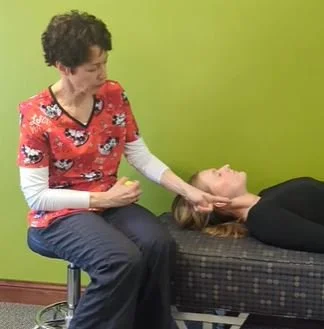https://www.sciencedirect.com/science/article/abs/pii/S1413355524000042
I continue to listen to a series of research podcasts, catching up from 2015 and on. All I can say is that we have some amazing colleagues doing serious research and enlightening our day to day practices.
This particular piece of research caught my attention because I've been thinking about children a lot recently. We have a crop of new babies coming in to the office, the children are back in school dragging heavy backpacks and happily crashing into each other in their fall sports.
Over the last 30 years of practice I feel that at times I have been fighting an uphill battle in the area of chiropractic pediatrics, trying to convince many parents and the community at large that children do develop spinal problems fairly early, fairly frequently, and that we are currently operating by a false narrative that back pain is not something that happens to children but rather to adults, and that if a child is complaining about pain, it is usually a psychological reason behind it. Up until recently we've not really had much research data to back this up.
This brand-new study (January 2024), from Brazil, indicates that a whopping 30% of adolescents may complain of spinal pain that could be at times disabling. What's most interesting looking through the fine print of the paper is that the pain pattern is really quite similar than adults already. (Objective factors, risk factors etc.) these numbers fly in the face of our current cultural understanding of spinal pain in children, much less our healthcare intervention resources. Having had the pleasure and privilege of working with individuals from birth to natural death over 30 years, I can say without a doubt that I have been shocked by the types of finding I've seen in rather young children over the year. But ultimately, as time goes by, I see the continuum of presentation between my adult patients and the history of their 1st trauma much more clearly now. When I see the children taking tumbles on the playground, falling down the stairs, and wrestling with the siblings I realize that none of us adults could do this and still get out of bed the next day. To be fair children's neuromusculoskeletal systems are more pliable and a little more resilient than ours, but they do not magically survive some of these injuries without some potential long-term residuals that will manifest episodically into adulthood.
I am most excited about another 10 year longitudinal initiative started in Denmark, currently underway. It will start screening a very large swath of schoolchildren starting in preschool and through high school, looking at a variety of metrics from pain to motor control to balance to visual efficiency. I think were going to get a wealth of data as to how children develop pain over time and what the risk factors are in their history, as well as what early signs in their other developmental milestones may be useful to flag them for early intervention. Those little people are genuinely our most precious resource and it's time we stop writing off their back pain as just something in their heads.









